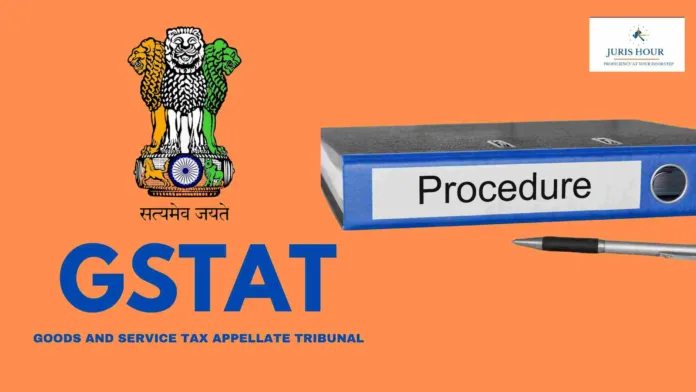The Goods and Services Tax Appellate Tribunal (GSTAT) has emerged as a crucial institution in India’s indirect tax dispute resolution framework. As GSTAT begins functioning across the country through its Principal and State Benches, it is essential for advocates, tax professionals, and authorised representatives appearing before the Tribunal to understand its structure, procedures, and legal framework.
This article, based on the Handbook on the GSTAT (Procedure) Rules, 2025, outlines the foundational aspects every legal practitioner must be aware of before practicing before the Tribunal.
Constitutional Backing and Legal Journey
The GSTAT draws its powers from Article 323B of the Constitution of India, inserted through the 42nd Amendment in 1976. Although GST was introduced in 2017, the establishment of the Tribunal was delayed due to legal challenges regarding its structure and eligibility of members. Key milestones included legislative amendments in 2023, notification of the Principal Bench in Delhi in August 2024, and State Benches in November 2024. One of the significant reforms was allowing advocates to be appointed as judicial members.
Structure and Jurisdiction
The Principal Bench is located in New Delhi and is tasked with handling matters related to the “place of supply” and complex issues spanning multiple jurisdictions. State Benches handle all other types of GST disputes. Each State Bench comprises two judicial members (one functioning as Vice President), one Technical Member (Centre), and one Technical Member (State). The jurisdiction of each bench is clearly demarcated and must be verified before filing an appeal.
Bench Composition and Monetary Thresholds
GSTAT can constitute Single Member or Division Benches based on the nature and value of the dispute. A Single Member Bench may hear cases where the total tax, ITC, fee, or penalty involved is up to ₹50 lakhs, and no question of law is involved. All other cases are heard by Division Benches comprising a Judicial and a Technical Member. The Revenue Department can appeal only if the amount in dispute exceeds ₹20 lakhs. There is no monetary limit for appeals filed by taxpayers.
Appeal Filing Procedure
An appeal must be filed within three months from the date of communication of the impugned order. Filing is to be done online through the official portal (www.gstat.gov.in), although manual filing is permitted with prior approval from the Registrar.
A pre-deposit of 10% of the disputed tax amount (subject to a maximum of ₹20 crore each for CGST and SGST, and ₹40 crore for IGST) is required for the appeal to be admitted. In penalty-only cases, 10% of the penalty amount is to be deposited (notification awaited). The date of filing is taken from the provisional acknowledgement if the certified copy is submitted within 7 days. Otherwise, the final upload date becomes the filing date.
Formatting and Documentation Requirements
Appeals must carry the title “In the Goods and Services Tax Appellate Tribunal” and contain details such as the names, GSTINs, and addresses of all parties. The grounds of appeal must be concise, paragraph-wise, and written in double-spaced format on A4-size paper. Non-English documents must be accompanied by certified English translations. Every appeal should be signed and verified by the appellant or authorised representative, along with the submission of the authorisation letter.
Key Filing Forms
Some of the essential forms under the GSTAT Rules include:
- Form GST APL-05: Appeal to the Appellate Tribunal
- Form GST APL-02: Acknowledgement of appeal
- Form GST APL-06: Cross-objection
- GSTAT FORM-01: Interlocutory application
- GSTAT FORM-04: Memorandum of appearance
Authorised Representation
Eligible representatives include advocates, chartered accountants, company secretaries, cost accountants (with valid Certificate of Practice), GST practitioners, relatives, employees, and retired tax officers (subject to cooling-off conditions). Consent of the previously appointed representative is necessary when switching representatives.
As for dress code, male representatives are required to wear a black coat with a white shirt and black tie, while female representatives must wear a black coat over a white sari or dress. During the summer months from April 15 to August 31, wearing a black coat is not mandatory.
Hearing and Procedure
Tribunal hearings are held from 10:30 AM to 1:30 PM and 2:30 PM to 4:30 PM. Each party is permitted a maximum of three adjournments. Hearings can be conducted in physical or electronic (hybrid) mode upon permission. In case of non-appearance by the appellant, the Tribunal may dismiss the appeal or decide it on merits. If the respondent fails to appear, the matter may proceed ex-parte.
In case of conflicting opinions among bench members, the matter can be referred to a larger bench. The GSTAT also has the power to admit additional evidence under certain conditions.
Powers of GSTAT
The Tribunal enjoys powers similar to a civil court under the Code of Civil Procedure, 1908. It can summon witnesses, enforce attendance, direct submission of affidavits, and extend timelines. It also has the inherent power to issue necessary directions to ensure justice and prevent abuse of process.
Orders and Further Appeals
The GSTAT must pronounce orders within 30 days of the final hearing. Orders are required to be signed by bench members in order of seniority and must include clear, reasoned decisions. Certified copies are issued to all parties. Orders can be rectified within three months for any apparent errors.
Appeals against orders of the State Bench can be filed before the High Court within 180 days, provided a substantial question of law is involved. Appeals against orders of the Principal Bench (which includes place of supply matters) lie directly before the Supreme Court.
Additional Practitioner Points
Legal representatives may inspect case records upon application. Affidavits must conform to Order XIX Rule 3 of the CPC. The Tribunal can impose litigation costs or exemplary costs for frivolous litigation. It can also consider Supreme Court or High Court orders while deciding related matters.
Conclusion
The GSTAT is poised to bring a much-needed boost to the resolution of indirect tax disputes by ensuring faster and uniform adjudication. However, for advocates and legal representatives, strict adherence to procedural rules, documentation standards, timelines, and jurisdictional checks is vital for effective advocacy. The Tribunal offers a structured legal forum, but success before it depends heavily on legal preparedness and procedural discipline.

